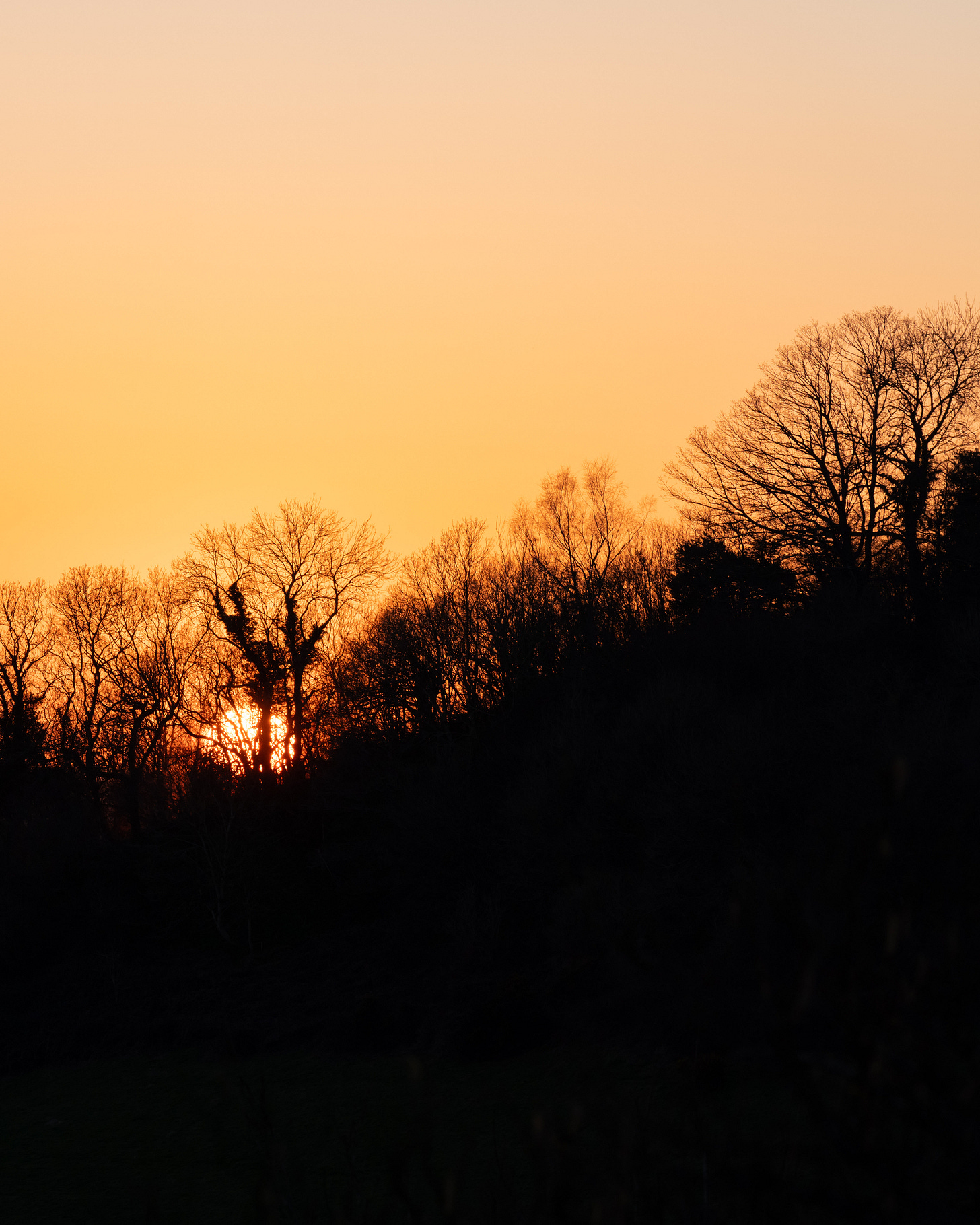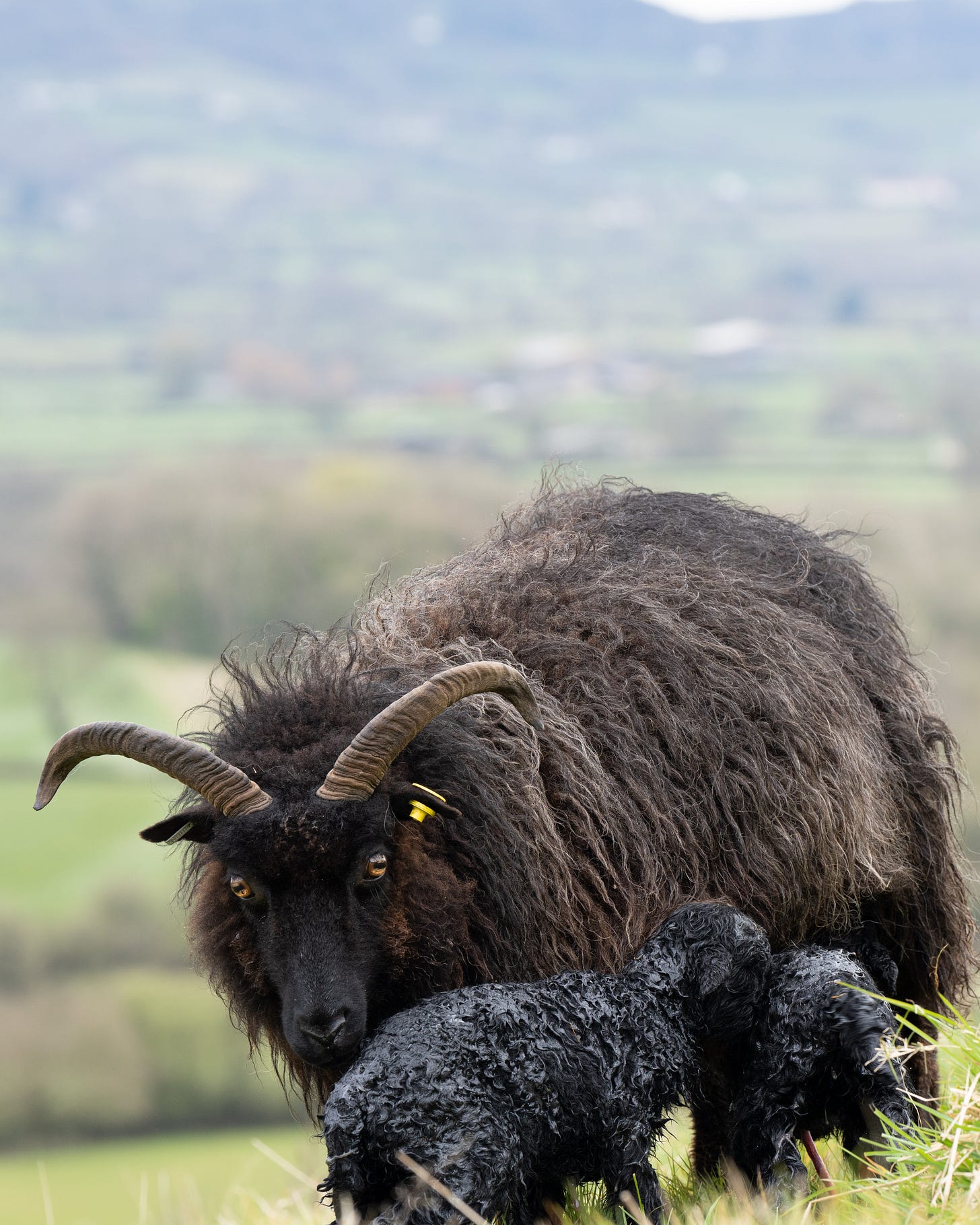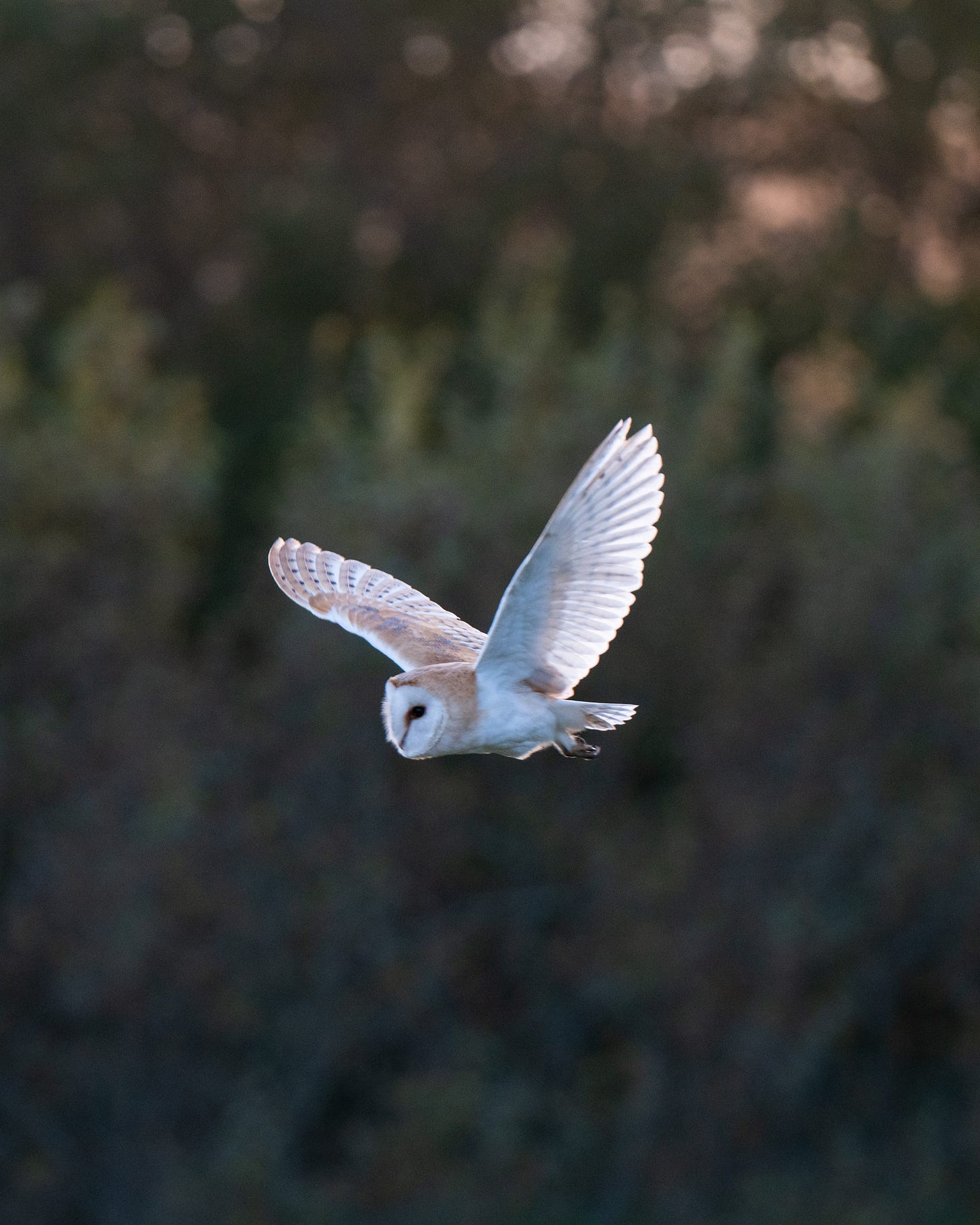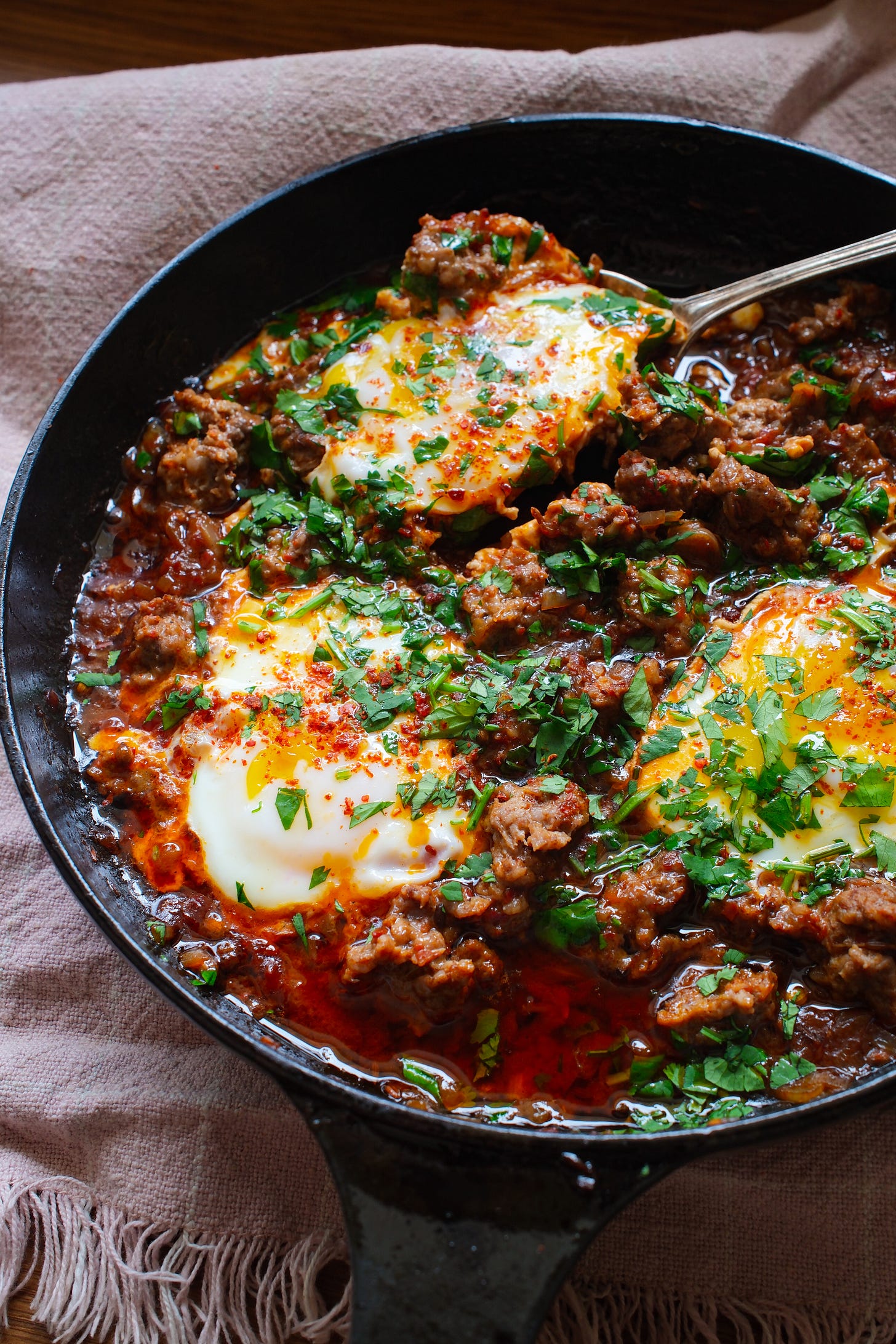I wanted to start by thanking you for such a warm and supportive welcome to Substack. To all of you who’ve joined so far, thank you, it means the world. I’m still figuring out how it all works, but looking forward to sharing more and more. Last week I did my first live, with Finn Harries, as part of Grubstack which was such a great conversation and made me want to do more. Maybe live lambing? Or veg planting?
This week I’m sharing another farm diary and a recipe that exploded on my Instagram, I think it has 12 million views total. An unusual version of shakshuka that I had whilst on holiday in Morocco a few years ago, with little bits of spiced lamb mince poached in the bubbling tomato sauce, cooked in a tiny little café hidden in the bustling streets of Essaouira.
On the farm EVERYTHING is geared towards lambing. I have 45 sheep due to start giving birth at the end of March, which means a month of madness is about to begin. Late nights, early starts and extreme animal husbandry. I am fizzing with excitement.
Lambing is pure joy, intense highs and pretty desperate lows. It’s raw and real, a time when you feel deeply connected with the best of nature. Witnessing the complex sensitivities of animal instincts on an intimate level. Lambs born at 2am in horizontal driving sleet, soaked to the bone and surviving on warm bursts of milk, sheltered from the worst of it by a mother’s intuition to stand on the right side of the wind with the protection of a hedge. The weather plays a vital role in those fragile first few moments and it’s often a fine line between life and death. Breached lambs, lost lambs, rejected lambs, mis-mothering confusion and prowling foxes. The more you are out with them the more chances you have to save them. This year I’ll be setting my tepee out in the field and camping alongside them for the most important moments, fire lit, pot bubbling, lantern glowing. Just got to hope this incredible weather holds!
Our farm earns income through selling hogget, an older, slow-grown version of lamb that’s not quite mutton, and through government subsidies for all that we do to protect and provide for nature. The sheep are the key to maintaining our wildflower meadows and of course providing the hogget I sell each year. So this next month is critical to what are already pretty non-existent margins. If the weather is brutal and I haven’t done a good enough job nurturing the ewes over winter it can be a gruelling month on the farm.
To prepare I have been moving the ewes around the farm each week, dividing up the fields into sections with mobile electric fencing and rotating them around the grass we managed to save from autumn, and the little that has been growing through winter. As we get close to lambing I also feed them a little grain every other day, as a lamb puts on 75% of its foetal growth in the last 6 weeks of pregnancy, a small bit of hard food does wonders for the mothers when there’s not enough forage.
Yesterday I moved them into a field that I’ve been saving all winter, in fact it hasn’t been grazed or touched in 2 years. It’s just been sitting wild and unkempt, covered in large tufts of dead tangled grass, thousands of dried wildflower seed heads, rushes and patches of gorse and bramble. It’s beautiful. One side is banked by a huge hedge with giant oaks, holly and blackthorn. The other by an undulating spring water stream crowned by catkins and willow blossoms. It’s a field fizzing with life, every step you take out pops a vole or mouse from a tuft of wild grass, the owls hunt there all night and the hawks by day. Insects flitter in the low lying light and it’s stringed with deer tracks and bolt holes hidden in the wild tangled hedge. The birdsong is a waterfall of noise, and I’ve left it like this for nature to thrive there. But a good graze now will do it some good. Dynamic change in habitat is important. The tall tufty grass provides a lot of room for the small mammals, but it also chokes and diminishes the wildflower, so a quick and intense graze by the sheep will knock back the grass and open up the ground for a fantastic wildflower season. It’s a field covered in knapweed, corky fruited water dropwort, hawkbit and birdsfoot trefoil - excellent butterfly and insect fodder. The grass will grow back in no time and it will continue being this wonderful habitat as a hay meadow until late autumn.
Late yesterday, my brother Lucian and I took the tractor around the edge of the field, topping a little path for the electric fencing so the long grass wouldn’t short the current. We then spent the evening rolling out wire and bashing in metal posts with a pair of tawny owls calling to each other from the woods below. Early this morning we went up the hill, laid down the sheep’s current fence and walked them down the hill by shaking an empty bag of feed for them to follow. They did so with glee, hopping and skipping down the hill with a slightly heavier and wobblier gait than usual, Lucian following behind in the gator to round up any stragglers who took a wrong turn.
I have a tame bottle-fed ewe in this flock, Bramble, who grew up by the aga with a baby goat Hazel. For years Bramble was convinced she was a goat and didn’t want anything to do with the sheep. But eventually I managed to persuade her to join this flock and she is incredibly useful because she’ll follow me anywhere, and when you get one sheep moving, the others follow which makes jobs like this much easier when you don’t have a sheep dog. Eventually we made it down, tucked them through a little break in the hedge and they exploded onto the grass. Watching your sheep enter a new field is one of the most rewarding moments of being a farmer, watching them foraging in the abundance, walking the edges, inspecting their new surroundings. A field becomes a home to a sheep, they get very attached and don’t love leaving somewhere they’ve been for a long time, even when the grass has completely gone and they’ve been nibbling at nothing to survive. My brother and I sat for a while, enjoying the fruits of our labour, a job done well. Watching and listening as the sheep ate avidly for a while, then collapsed on a bank and basked in the sun, chewing the cud in peace. We grabbed a water trough and filled it from a mobile tank, gave them a salt lick and left them to it. They’ll be here for two weeks, then I’ll move them closer to home just as they begin to start lambing.
We then went up to our neighbours farm to stock back up on hay as ours had run out. Lucian’s looking after things while I take a few days off before lambing, so we’re stocking up on feed and getting all the big jobs done to make it easier for him. We fed our neighbours cows quickly while we were there. Topping up their barley straw and enjoying the deep guttural moos and sounds of the barn, dust sparkling in the low dying light, steam puffing from their noses as they grabbed great mouthfuls and chewed contentedly.
Anyway, this shakshuka. Ellie and I were on holiday in Morocco taking a break before lambing a few years ago. We’d spent a few wild days in Marrakesh eating the most extraordinary food, before escaping the madness of the city and heading to the coast. Essouaria is a beautiful windswept seaside town, roaring with culture. Incredible fish markets, wild dunes rolling into the sea, stunning colours, people and carpets but it’s quieter than Marrakech, a nice change of pace. Although we had been struggling to find food of the same calibre as the capital, the restaurants in the old town felt touristy and didn’t have the same oomph. So we were mostly cooking at home, saffron spiced agrodolce courgettes with eggs and flatbreads for breakfast, fresh fish bought straight from the harbour grilled on a little barbeque for lunch and a sour carrot tagine with spiced sultana rice inspired by a dish we’d had in Marrakech for dinner.
On our last day we were bumbling through the market looking to buy a few pots of saffron and spice blends to take home, when we stumbled past a tiny little restaurant rammed with locals, always a good sign. We sat down for some bread and olives, had a very simple vegetable tagine and then ate this incredible shakshuka with little pockets of lamb spiced heavily with cinnamon gently poaching in the harissa spiked tomato sauce. Runny yolks and warm flatbreads, heaven. It’s become a staple at home, and makes a very good start to the day on a cold grey spring morning, a proper fire in your belly. Enjoy!
Keep reading with a 7-day free trial
Subscribe to The Farm Diaries to keep reading this post and get 7 days of free access to the full post archives.







